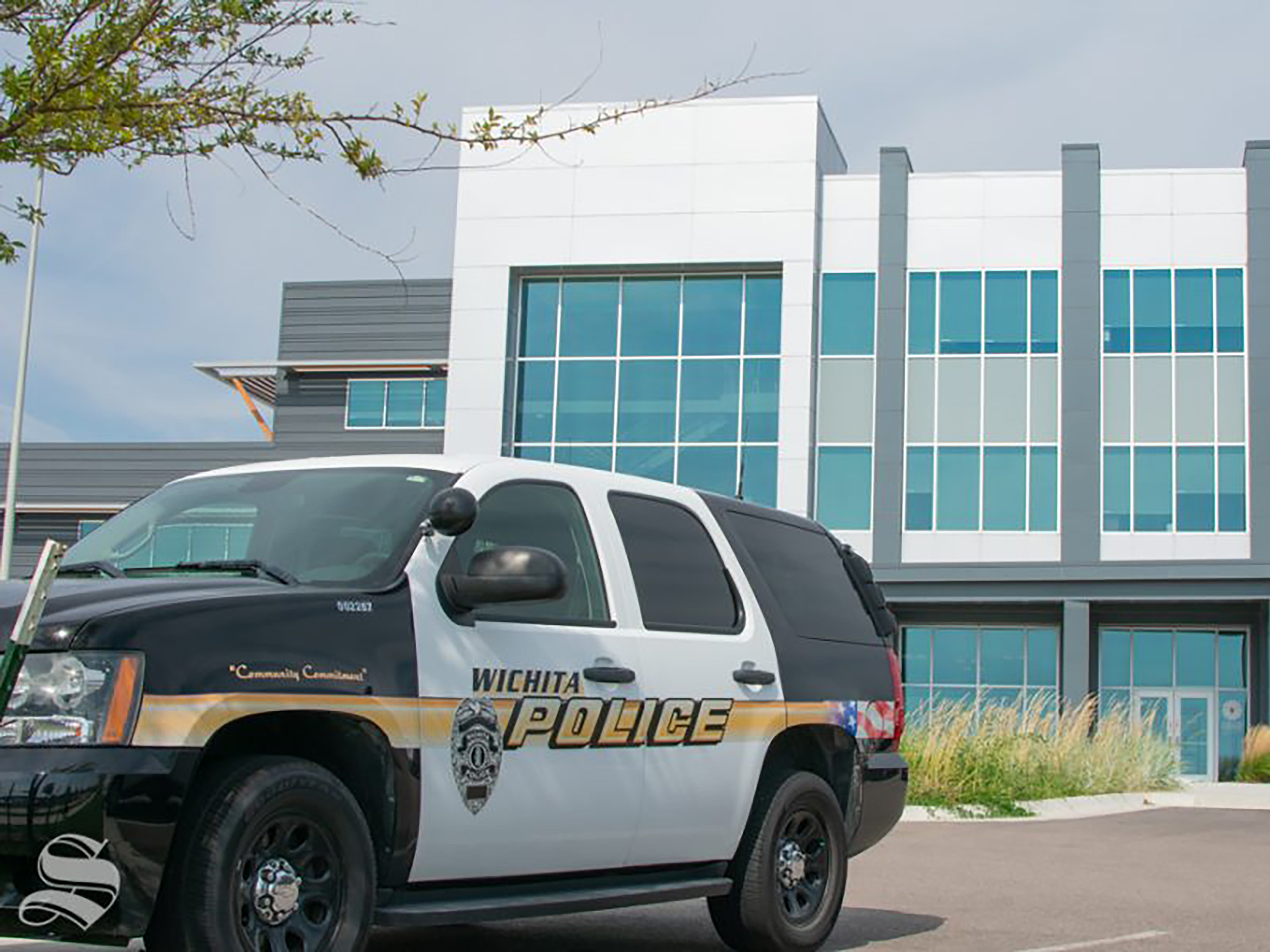It’s been a little more than two years since the Law Enforcement Training Center (LETC) found a new home on the northeast corner of Wichita State University, and both organizations have thrived within the partnership.
“As professor, every semester I will have members of the Wichita, Sedgwick County and university law enforcement community come talk to my class. This just works beautifully because they can just walk up to the third floor,” said Michael Birzer, professor of criminal justice. “It has resulted in a number of students applying and now getting jobs in law enforcement.”
In fact, applications to the LETC have increased 150% since 2015, when it moved from 37th Street North and Womer location in north Wichita, said Wichita Police Chief Gordon Ramsay.
“I believe a big part of that is our location on campus. Part of it is the cross-contamination of having the school above the academy building,” Ramsay said.
Sedgwick County Sheriff Jeff Easter said that in 2019, the Sedgwick County Sheriff’s Office Detention Facility had 77 employment openings. In 2019, the sheriff’s office put together a committee that rejuvenates recruitment, and today there are only 11 vacancies.
“Due to the new building, we believe it draws potential candidates in because it is more modern, showcases what the sheriff’s office is about and provides a quality environment for learning,” Easter said. “One of the biggest changes we have seen is the interaction with WSU and students who attend classes at the academy. The partnership has proven very fruitful for both of us. The quality of training has absolutely gone up because of the new campus. We no longer scrounge for space and LETC is a quality environment that is conducive for learning.”
Ramsay said that the increased recruitment numbers are largely due to the support of the faculty who teach in the building.
“Criminal justice professors are some of the LETC’s best recruiters,” he said.
Birzer sees the increased response in the students in his classroom.
“I can give you a list of students that this has resulted in them applying and now getting jobs,” he said. “Just last week a student emailed me to say, ‘I just want to let you know I start in the July class for the police department.’ Those are good things.”
The interaction between students and the LETC has been beneficial beyond recruitment.
“Keep in mind: Not everyone who’s a criminal justice major will go into law enforcement. That’s only about 20-25%. But all the students how have exposure to law enforcement officers when they're in and out of the building. That's very beneficial,” Birzer said.
Birzer said the law enforcement community has been more willing to engage the university in research projects.
“We can talk about evidence-based research we're seeing on the horizon,” he said. “Before, I think there was some hesitation that the university was an ivory tower, and we really didn't know about the realities of police work. I think that’s really increased quite a bit.”
The innovation and offerings of the LETC has really increased “the cool factor,” Ramsay said. One such example is the Crime Gun Intelligence Center, where “students are participating in real-life scenarios.”
In the center, students can test and match ballistics casings from guns.
“Casings are like fingerprints, and we can learn, for instance, if a gun was used in multiple drive-by shootings,” Ramsay said. “That was a partnership between the university and WPD.”
The partnership will continue to grow, Easter said. In 2021, the sheriff’s department will provide all in-service training for law enforcement within Sedgwick County – except the Wichita Police Department, which has its own in-service training – at the WSU LETC facility. Every law enforcement officer in the state of Kansas has to complete 40 hours of in-service training per year as part of licensing.
“Previously, most departments in Sedgwick County have a hard time finding quality training for their officers to attend,” he said. “We believe providing this training in the environment of the LETC will be a good collaboration for law enforcement in Sedgwick County.”


 Courtesy
Courtesy